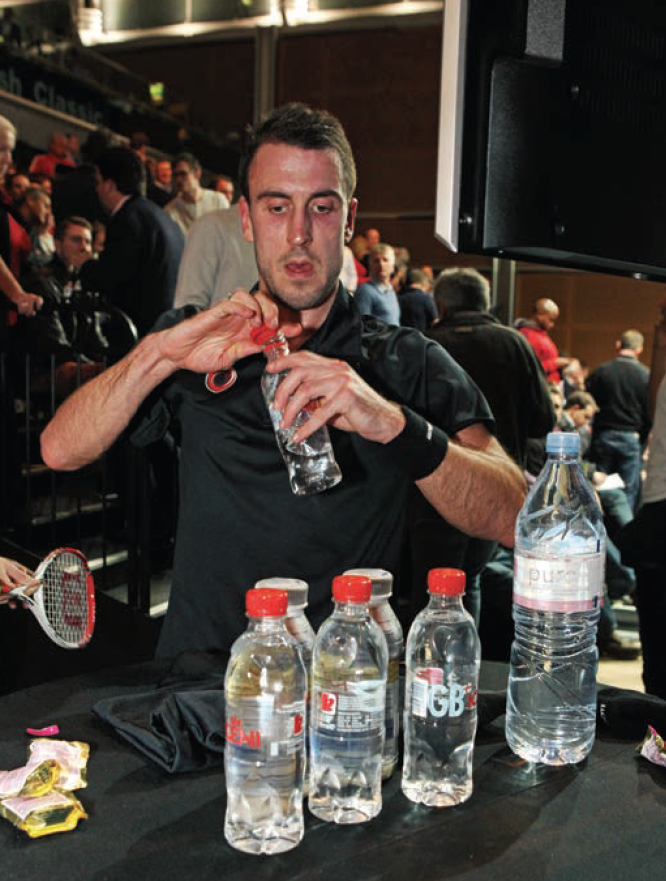
By Candace H. Chemtob, MS, RD, LD, CSSD
The proverbial “low hanging fruit” in sports nutrition is proper hydration. Improving your hydration regimen can have a significant impact on your athletic performance. And even better yet, this is an easy fix.
The human body is 50-70% water, depending on body composition. Muscle tissue is higher in water content than fat, putting well-conditioned, lean athletes on the higher end of this scale. Fluid balance is a dynamic equilibrium that maintains total body fluids within a very narrow range. At rest, total body fluids are maintained within +/- 0.2% which, for a 150 pound person, is +/- 0.3 pounds.
Disruption of this tightly regulated system, by under-hydration (dehydration), can dramatically impair athletic performance. A loss of 1–2%, or 1.5 to 3 pounds in a 150 pound athlete, “clearly impairs performance capacity” (EJCN, 2003). A study of runners showed 2% dehydration resulted in a dramatic drop in maximum speed by 6 to 7%. In a lightning quick sport, like squash, there is no doubt that 2% dehydration would negatively impact your game.
Squash players are at risk for dehydration. Sweating is linked to energy expenditure (the amount of calories burned), and playing squash burns 1,000 calories per hour—or more. Squash players can lose up to 1.5 liters of sweat per hour. Fluid losses of this magnitude without proper hydration can result in dehydration.
For adequate hydration, you cannot rely on thirst. By the time you are thirsty, you are already dehydrated. To maintain proper hydration, the following strategy is recommended for adults:
- 2 to 4 hours before squash, drink 16 oz
- 15 to 20 minutes before squash, 8 to 16 oz
- During squash, drink 15 to 20 oz every 15 to 20 minutes as a general recommendation but, since fluid needs vary from athlete to athlete, you should take the time to calculate your own individual fluid needs by the following method:
- Weigh yourself before exercise
- Keep track of fluids consumed during exercise.
- Weigh yourself after exercise, take the difference in your weight before and after exercise, then convert this into ounces (16 ounces per pound). Take this difference in ounces and add to the fluids consumed during exercise. This is the amount of fluid needed during exercise.
- Repeat several times to determine your own fluid needs
- To rehydrate after exercise: Take pre-exercise weight and subtract post exercise weight. For every pound lost, drink three cups of fluid. To adequately rehydrate, don’t drink plain water as this is counterproductive. Plain water “dilutes” blood triggering the kidneys to excrete more water. “Sports” drinks are not necessary—you could add 1/4-1/2 tsp salt to each 32 ounces of water/other beverages, drink milk, or be sure to eat food (which contains electrolytes) while drinking water.
Severe dehydration can lead to “heat stroke” which is an increase in body temperature. Heat stroke is serious and even a life-threatening condition. Young athletes are at higher risk for developing heat stroke and special attention should be paid to their needs. On the flip side, over-hydration has risks as well. Drinking copious amounts of fluids, especially plain water, can lead to hyponatremia (low blood sodium levels).
Know your fluid requirements. Develop a hydration strategy and plan accordingly every time you get on the court.





